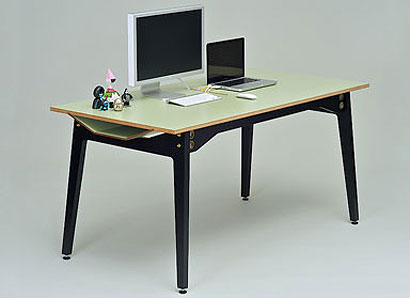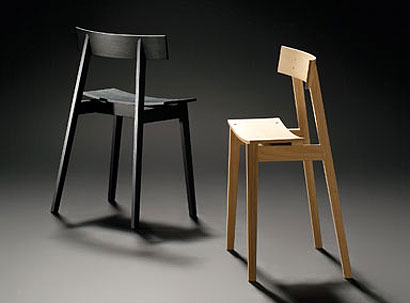|
KEIJI ASHIZAWA (top image)
Frama CPH
Sutoa
Materials and an industrial design aesthetic is the focus of design sales company Frama’s inaugural own-brand collection, which it presented at Qubique. The collection’s Sutoa drawer unit by Keiji Ashizawa plays on the Japanese word for storage in its title and combines a discreet steel frame with wooden stackable drawers in chestnut and a waterproof interior to create the look of a storage chest. Ashizawa says it is designed to be used, but to also be a sculptural object.
ALFREDO HÄBERLI
Auerberg
Bücherliege (book rest)
Auerberg founder Christoph Böninger wanted to create a design label at which designers could explore product ideas, free from the constraints of marketing. Its new collection is dedicated to living, books and the table, with each product based on the designer’s cultural background. Alfredo Häberli’s book rest emerged from his fascination with books – their content and their tactile qualities, weight and calmness. Created from a single piece of laser-cut, folded and anodised aluminium, it evolved from a precise observation of everyday life, with some inspiration from sculptor Alexander Calder.

WELTUNIT
Orville and Wilbur
Berlin-based design studio Weltunit presented its Orville table frame at Qubique. Founder Daniel Wahl wanted to use “wooden warmth” instead of the more expensive and common steel table frames. It is made from multiplex plywood sheets, and the production version will be finished with melamine foil. The frame was designed to complement the studio’s Wilbur table top that it originally created to update the classic German Egon Eiermann office desk. Made from MDF wood board with CNC-machined joints, Wilbur instantly makes old table frames suitable for today’s laptop user. It has a hidden compartment for cables, with easy access through a flush cut-out panel in the table top.

FABIEN DUMAS
Marset
Tam Tam
Inspired by the archetypal lampshade, the Tam Tam extols repetitiveness, according to Berlin-based designer Fabien Dumas, and invokes a feeling of organised chaos. The Tam Tam consists of a large central shade in lacquered aluminium and various satellite shades, which can be rotated 360 degrees, thanks to a swivel mechanism. An opalescent, methacrylate diffuser across the opening softens the light. Two models are available, with either three or five satellite shades, and each shade can be personalised in black, white, orange, tobacco, green or grey.

WOOJIN CHUNG
Moebel Tooko/Asahikawa
Half Chair
The Global:Local project by Wolf Udo Wagner aims to promote quality handcrafts from around the world by bringing designers and manufacturers together. In the first stage, designers worked with the Asahikawa Furniture Cooperative in Japan. With his Half Chair, Korean designer Woojin Chung wanted to counter people’s inclination to slide down on chairs, putting unnecessary strain on their musculoskeletal systems. He removed the front half of the seat to create a deceptively comfortable chair that encourages good posture, then adapted its shape and structure. The chair saves space and uses minimal material.

|
|
Image
Keiji Ashizawa
Words
Anna Richardson Taylor
|